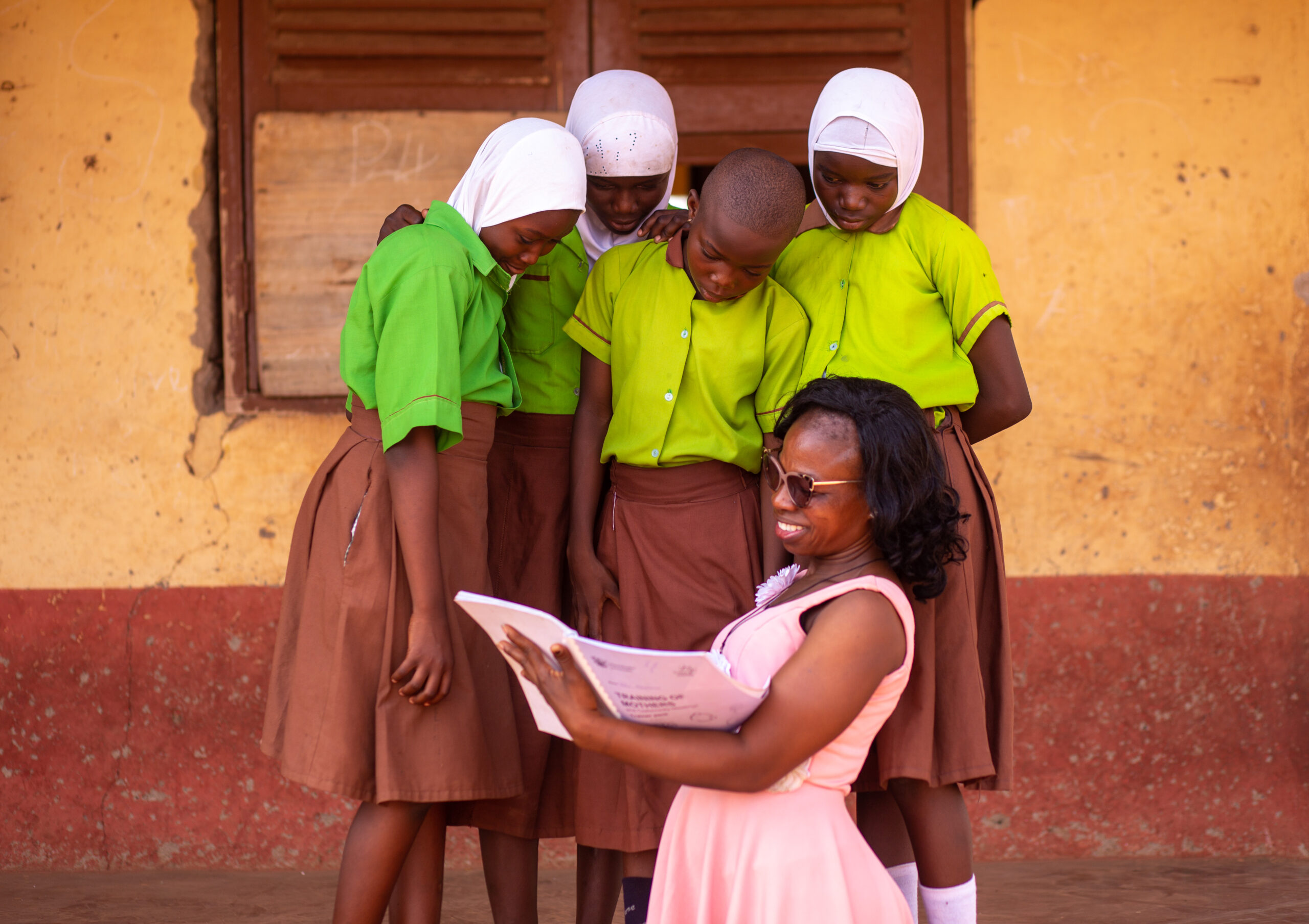FROM LEARNING GAPS TO LEARNING GAINS: RURAL GHANA’S QUIET EDUCATION REVOLUTION

By Prince Tamakloe/Raphael Adomey McClure
In the early morning haze of Ayensuano, 12-year-old Adwoa grips her exercise book as she walks to school, barefoot, but determined. Until recently, she struggled to read even basic sentences. Today, she stands in front of her class confidently, reading aloud.
“I used to feel shy because I didn’t understand what was written,” she says. “But now I can read. I even help my little sister with her homework.”
Adwoa’s story is becoming increasingly common in parts of rural Ghana where, for years, education meant access but not necessarily achievement. Though Ghana has made tremendous progress in getting children into classrooms, with over 90% enrollment at the primary level, rural communities like Suhum and Ayensuano have long lagged behind, grappling with poor infrastructure, teacher shortages, and deep-rooted social challenges.
Barriers Beyond the Blackboard
For many rural children, simply getting to school is a victory. But staying there, and succeeding, is a different battle altogether.
At the secondary level, the numbers start to drop. Only about 65% of children move on from primary to Junior High School (JHS), with many pulled out to help on farms, get married early, or due to sheer financial pressure.
“Sometimes, girls don’t come back after vacation,” says Madam Efua Danso, a JHS teacher in Suhum. “You ask around and hear she’s been married or is expecting a child. It breaks your heart.”
Even those who remain often face quality deficits. The World Bank reports that only 35% of primary students in Ghana meet minimum proficiency in reading and mathematics, highlighting a systemic issue in how children are taught and supported.
A New Approach, A Brighter Path
That is where Savana Signatures’ Rural Youth in Ghana Catching Up on Education project stepped in, with a mission to change the narrative.
The project, implemented in Suhum and Ayensuano, focused not only on getting children into school, but making sure they learn, grow, and stay.
Professional development for teachers and school leaders has been a cornerstone. Through training in clinical supervision, learner-centred pedagogy, and the Standard-Based Curriculum, teachers are now better equipped to engage and inspire their students.
But the learning goes beyond academics.
“We teach about emotions, relationships, and personal growth,” says Mr. Ibrahim, a beneficiary teacher involved in the project. “Children now talk about how they feel. They’re more respectful, more confident, and more willing to learn.”
The project placed strong emphasis on Social and Emotional Learning (SEL) and Reproductive Health Education (RHE), areas often overlooked in rural classrooms. Teachers have been trained to weave emotional intelligence, self-awareness, and reproductive health into everyday lessons.
The outcome? Better behavior, improved attendance, and stronger student-teacher relationships.
“Before, I didn’t know how to say what I was feeling,” says 13-year-old Evans Kofi. “Now I tell my teacher when I’m sad or scared. She listens.”
Communities That Care
True to its community-based approach, Savana Signatures ensured that the project also tackles the social and cultural challenges that affect learning, particularly for girls.
Savana Signatures has organized 45 community meetings, opened dialogue on issues like teenage pregnancy, child marriage, and parental neglect, and trained 150 parents on positive parenting and the importance of supporting girls’ education.
“I didn’t know how to talk to my children about certain things,” admits Beatrice, a mother in Ayensuano. “Now I talk to my daughter about her body, about school, about staying focused. I want more for her.”
Savana Signatures Closing the Gap, One Child at a Time
Raphael McClure Adomey the Programmes Manager for Education at Savana Signatures says the transformation is visible. “In classrooms, once quiet girls now raise their hands. Parents who rarely visited schools are now joining PTAs and attending workshops. Teachers who once felt unsupported now feel empowered.” Says Mr. McClure
There is still more to do, scaling interventions, enhancing teacher training, and deepening partnerships with the Ghana Education Service, but the path ahead is clearer than ever.
Through this model, learning gaps are being filled with real, measurable gains. Not just in test scores, but in confidence, awareness, and hope.
In rural Ghana, where a school uniform was once just a piece of clothing, it’s becoming a symbol of possibility.
